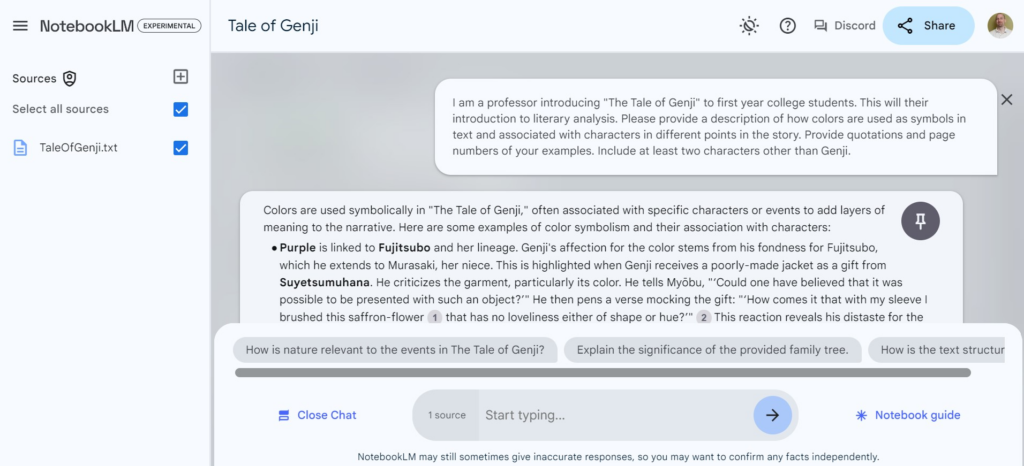One of the weaknesses with AI has been that its answers are always very general. The response is based on their language models containing enormous amounts of text from the web. In many cases, this provides an adequate answer, but often we want the response to based on a much more limited set of text. For businesses, this may be their private financial or marketing materials. For academics, may use a textbook or set of articles.
If you use ChatGPT, you may have noticed a paperclip icon in the text area. You can upload files locally or via OneDrive. Google’s Bard, now Gemini, offered something last year linking to documents via Google Drive. We wrote about it in blogs posts earlier with Language Model Examples and Research Process for Undergraduate Students.
Now Google has a site in beta called NotebookLM. It allows you to create a “notebook” containing PDFs, text files, etc. either uploaded directly or via Google Drive. You can then select some or all of these files to query.
For example, the NotebookLM below contains a copy of “The Tale of Genji”, a foundational literary work for Japanese, which I then prompted to explain the use of colors in the text. Note the citations it generated as well.
To recreate this:
- Go to NotebookLM and create a new notebook.
- Go here to download the Tale of Genji as a text file.
- Add the file to your Notebook, use the + sign top left by Sources
- Enter the following prompt:
I am a professor introducing “The Tale of Genji” to first year college students. This will be their introduction to literary analysis. Please provide a description of how colors are used as symbols in the text and associated with characters in different points in the story. Provide quotations and page numbers of your examples. Include at least two characters other than Genji.
This is one example with one file, but it will take up to twenty. In addition to articles or primary sources, another possible use is to upload the course textbook and other course materials, if PDF or text versions are available. Otherwise you can try searching for open access textbooks on the same topic. NotebookLM can then provide explanations that are more targeted to students and more closely matching explanations they received in the course. If you want to share the notebook with students, the “notes” you create are visible to others, but not your chat history.
As with everything from AI, it can make errors, though focusing on a text and the citations are both significant improvements. NotebookLM is also very much a beta product for Google. Features may change, or it could even disappear entirely as more capabilities are added to their principal AI interface, Gemini. Finally, this is a Google product. So anyone using or sharing a NotebookLM will need a Google account to access.
